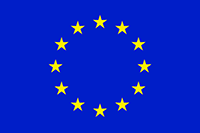

Gender and Cultural and Creative Sectors: a guide on gender integration in cultural statistics
Led by eConcult and framed within an "Experimental Gender Analysis", the "Guide on Gender Integration in Cultural Statistics", conceived as a booklet, is the result of a specific and comprehensive, theoretical and empirical, analysis aimed to identify existing gender gaps in the statistics of Cultural and Creative Sectors (CCS) regarding creation, production, dissemination, consumption, participation and even preservation.
While the availability of data on culture is improving, its disaggregation by gender is still often neglected. To contribute to bridging this gap, this guide targets statistical institutions and policymakers with relevant and grounded suggestions and recommendations to adapt existing survey instruments and to develop internationally comparable polls that better capture the extent of women's role in culture, considering issues related to access, participation and active involvement.
To do this, the University of Valencia's team focuses on three different perspectives.
To start with, it seemed appropriate to apprehend the importance of gender within the CCS, its present situation, and the role played by cultural statistics, consulting the existing literature in this regard.
In the second place, the research's focus switches towards the gender approach undertaken in existing cultural statistics at the European level, based on secondary data collected through desk research. The National Statistical Institutes of the European Union countries were consulted in order to create a database of 536 existing statistics on culture categorised by country, topic, source, and institution. For each one, the presence of gender-disaggregated data was verified.
Finally, an exploratory empirical research on gender aspects in cultural participation was conducted. Analysed data was gathered using the AU Culture platform, available at eConcult and aimed at measuring the impact of cultural events on individuals and at grasping the formation as well as the evolution of cultural values in people.
The main suggestions and recommendations elaborated in this document can be summarised as follows.
From the study of the literature, four main requirements are stressed: 1) to continue the efforts to produce global, comprehensive and robust data; 2) to achieve a regular and methodical collection and distribution of sex-disaggregated data in all areas of the CCS; 3) to either establish an independent European observatory for the CCS or to implement the three-stage action plan proposed by the Open Method of Coordination working group of Member States' experts; and 4) to actively emphasise and promote the inclusion of further socio-economic variables susceptible to intersect with gender, aggravating and further complicating patterns of disadvantage, exclusion and inequality.
After the analysis of current cultural statistics, it is advised to: 1) establish a European-level guideline urging the Member States to introduce a gender equality law that includes the adaptation of statistics; 2) require gender-disaggregated data from all mandatory statistics at the European level with particular attention to cultural and creative enterprises and international trade; and 3) set up a joint working group of gender and statistics experts who can advise on how to introduce the gender variable into the more complex surveys to highlight the role of women in the different aspects of the CCS.
Finally, the implications of the experimental research on gender in cultural participation presented in the last part of this booklet are to: 1) keep monitoring the impacts in the long run by conducting research with a wider and more representative sample, addressing the participants' sexual orientation more extensively and incorporating longitudinal designs; 2) expand the research towards gender biases in the defining components and processes of determination for the currently widespread cultural impact indicators; 3) bolster and expand the AU Culture platform's scope in collaboration and partnership with different cultural institutions and managers; and 4) go beyond consumer feedback, developing better techniques in collaboration with arts and culture organisations to discover what European citizens value and how the cultural experience resonates with them.

